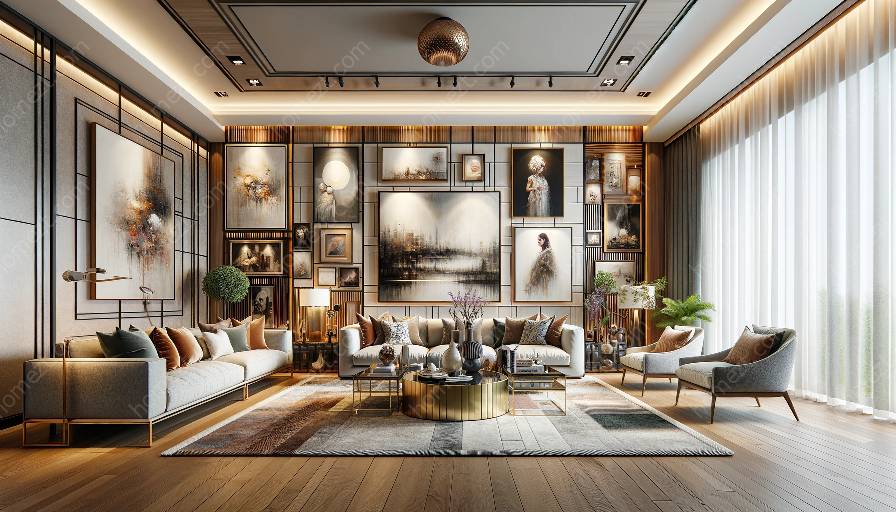Interior design plays a crucial role in shaping the look and feel of a space. It involves the use of various elements such as color, texture, furniture, and accessories to create an aesthetically pleasing and functional environment. There are numerous interior design styles, each with its own unique characteristics and features. Understanding these styles can help you create cohesive and visually appealing interiors. Additionally, incorporating art into your interior design can add personality and character to your space, making it a reflection of your individuality and taste.
Characteristics of Different Interior Design Styles
1. Mid-Century Modern: This style emerged in the mid-20th century and is characterized by clean lines, organic forms, and minimal ornamentation. It often features natural materials, such as wood and leather, and a palette of earthy tones.
2. Scandinavian: Known for its simplicity, functionality, and minimalism, the Scandinavian style embraces light, neutral colors, natural materials, and a clean aesthetic. It aims to create a sense of serenity and harmony in a space.
3. Industrial: Inspired by urban lofts and warehouses, the industrial style incorporates raw and rugged elements, such as exposed brick, metal, and distressed wood. It often features neutral colors, vintage furniture, and utilitarian objects.
4. Bohemian: This eclectic and vibrant style celebrates free-spiritedness and self-expression. It embraces layered textures, rich colors, and an array of patterns, often drawing inspiration from global cultures and travels.
5. Contemporary: Characterized by clean lines, neutral colors, and a focus on simplicity, the contemporary style often integrates modern materials and innovative design concepts to create a sleek and sophisticated look.
6. Traditional: Timeless and elegant, the traditional style features ornate furniture, rich colors, and classic patterns. It exudes a sense of formality and sophistication, often drawing inspiration from European design traditions.
Decorating with Art
Art serves as a powerful tool in interior design, allowing you to infuse a space with personality and visual interest. When decorating with art, consider the following:
1. Selecting Art That Reflects Your Style:
Choose art pieces that resonate with your personal taste and complement the overall style of your space. Whether it's contemporary, abstract, traditional, or minimalist, the art you select should enhance the ambiance you wish to create.
2. Creating Focal Points:
Art can act as a focal point in a room, drawing attention and adding a sense of drama. Consider hanging a bold piece above a fireplace, sofa, or bed to create a striking focal point that anchors the space.
3. Incorporating Different Mediums:
Experiment with various mediums, such as paintings, sculptures, prints, and photographs, to introduce diversity and dimension to your decor. Mix and match different types of art to add visual intrigue.
4. Considering Scale and Proportion:
Ensure that the scale of the art pieces is appropriate for the size of the wall or the space where they are displayed. Oversized art can make a statement in a large room, while smaller pieces can be grouped together to create a curated gallery wall.
5. Using Art to Add Color and Texture:
Art can introduce color and texture to a space, creating visual depth and enhancing its overall appeal. Consider incorporating art that complements your existing color scheme and adds a tactile element to the room.
Conclusion
Understanding the characteristics of different interior design styles can empower you to make informed decisions when designing or revamping a space. By incorporating art into your interior design, you can elevate the aesthetic appeal of your environment and infuse it with your unique personality. Whether you prefer the clean lines of mid-century modern, the bohemian eclecticism, or the timeless elegance of traditional design, art can serve as a unifying element that ties your chosen style together. Experiment with different interior design styles and art forms to create a living space that truly reflects your individuality and resonates with your aesthetic sensibilities.






































